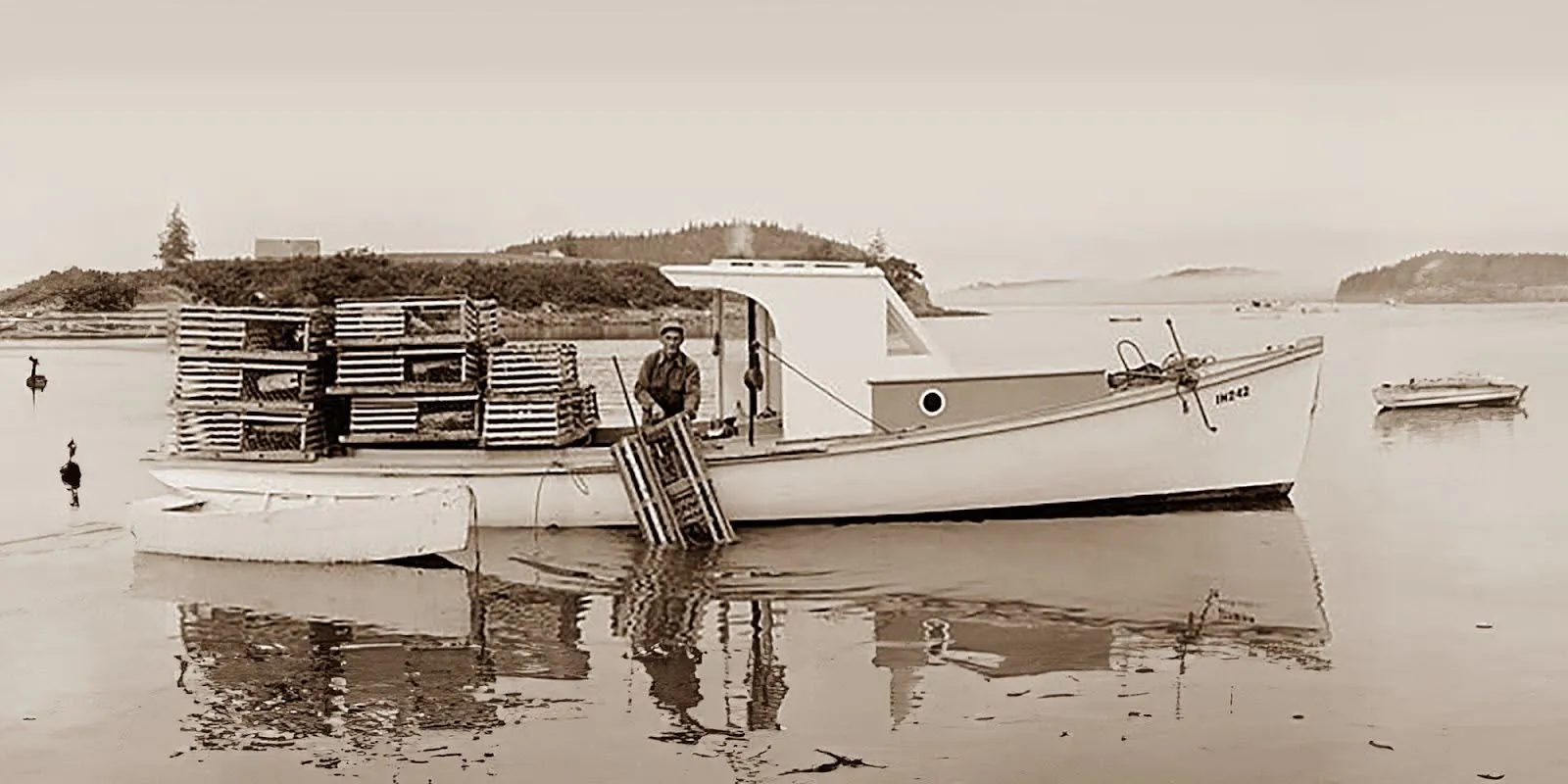
The Evolution of the Lobster Boat
The history of lobster boats in Maine is a story of resilience, innovation, and the symbiotic relationship between the rocky coastline and industrious fishermen. Fishing vessels for lobstering have undergone significant transformations over the years, evolving from humble beginnings into the specialized and efficient craft that dot the beautiful harbors of the Maine coast today.
In the late 19th century, when lobster fishing in Maine was gaining prominence, the boats used were small, open, and operated using oars or small outboards. These early vessels were crafted for simplicity and designed to navigate the rocky and unpredictable waters of the Gulf of Maine. The boats were typically around 20 feet in length or just a bit shorter and allowed lobstermen to haul traps and navigate close to the shore where lobsters thrived.
During this earlier time, lobstermen used basic yet effective techniques for catching lobsters. Wooden traps, known as lobster pots, were dropped to the ocean floor, and attached to buoys that were also made of wood. Lobstermen would row out to their traps, identify their buoys, and haul the traps aboard. This hands-on approach required a level of physicality and skill that characterized the early days of lobster fishing in Maine.
The transition from oars to engine power marked a significant turning point in the evolution of lobster boats. In the early 20th century, as gasoline engines became more reliable and accessible, lobster boats began to incorporate this technology. The addition of engines brought increased speed and efficiency, enabling lobstermen to cover more territory, expand their fishing grounds, and catch more lobsters.

As the lobster industry grew, so did the demand for larger and more specialized boats. In the 1970s, lobster boats became sturdier, with a focus on stability in the often-challenging conditions in the Gulf of Maine. The evolution in design was driven by the need to accommodate larger traps, more significant catch loads, and increased range for fishing. Around this time, lobster traps also switch from rounded wooden traps to rectangular coated-wire traps.

Various makes and models of lobster boats have emerged over the years, reflecting the diverse needs of lobstermen and the regional variations in fishing practices. Some popular designs include the Downeast-style lobster boat, characterized by a semi-displacement hull, a distinctive bow, and a utilitarian layout. These boats are well-suited for the conditions of the Gulf of Maine and have become an iconic symbol of Maine’s lobstering tradition. Many boats are also named after their makers like Young Brothers and Calvin Beal. Lobstermen have a deep connection to the stories of how their boats were made and by whom.

Lobster boats are celebrated each summer off the coast of Maine during the lobster boat races. These races are a popular and unique maritime tradition in the state of Maine. The races, which feature iconic lobster boats, are held during the summer months and are scheduled in various coastal communities from Portland to Jonesport-Beals. There are categories for different engine types, boat sizes, and types of boat (like skiffs). Lobster boat races have a history dating back several decades in Maine. The races have evolved from informal gatherings of fishermen showcasing their boats’ speed to organized events that attract attention from locals and visitors alike.

In recent years, technological advancements have further influenced the design of lobster boats. Fiberglass hulls, advanced navigation systems, and hydraulically powered equipment for trap hauling have become standard features, enhancing the efficiency and safety of lobstering operations.
The history of lobster boats in Maine is a testament to the adaptability and resourcefulness of the fishermen who have shaped this industry. From the humble rowboats of the 19th century to the modern, specialized vessels of today, lobster boats have evolved to meet the challenges of a demanding profession. As Maine’s lobster industry continues to thrive, the legacy of these boats endures, embodying the spirit of a coastal community deeply connected to its maritime heritage.
We make it easy and accessible to get the freshest lobster delivered directly to your door, all from the comfort of your home. At ShopLobster, you’ll find all of the information and preferences you need to find your ideal lobster and even some tips on how to prepare it! So, no matter how you plan on serving your live Maine lobster, ShopLobster has you covered with the best lobster in the country; lobster you can feel good about choosing.




